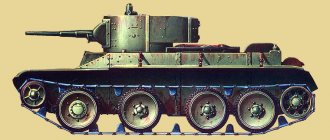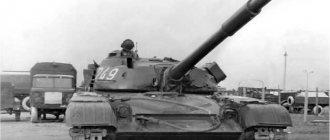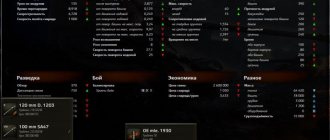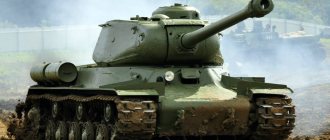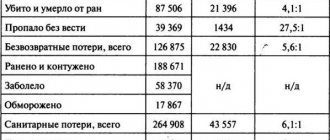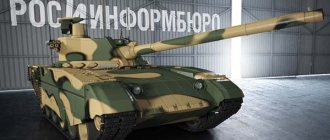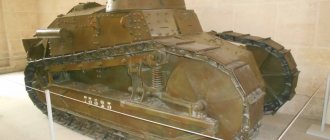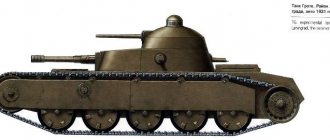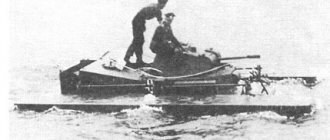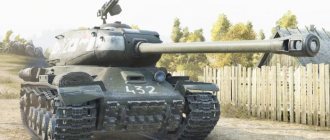To this day, the song “Three Tankers” is known and even popular. However, many associate it with the Great Patriotic War, and the tank with the “thirty-four”. Although the song talks about “the border at the Amur,” and the T-34 crew consisted of four or five, and not three tankers. And the song was written back in 1938. And the “combat vehicle” that is being sung about is the BT-7 light wheeled-tracked tank.
A representative of a family of armored vehicles, which was probably the best Soviet tank of the pre-war period, and one of the best in its class in general. “Batashki” fought back in 1945, “outliving” some more modern vehicles.
History of creation
In 1930, the head of the mechanization and motorization department of the Red Army, Innokenty Khalepsky, arrived in the United States. The purpose of his trips abroad was to study samples of foreign military equipment, and, if possible, to purchase them for further study in the USSR. In America, Khalepsky became interested in the M1931 tank, an initiative development by designer John Walter Christie. One of the features of this vehicle was its wheel-tracked propulsion system.
At that time, the service life of the tracks was small, and tank tractors did not yet exist, which, coupled with the destructive effect of the tracks on the road surface, made it difficult to transport tanks. Christie got out of this situation by using rubber-coated wheels as rollers, the front pair of which could turn. Thus, the tank could drive on roads on wheels, while demonstrating record speeds for its time.
At the end of the year, two M1931s (though without weapons and turrets) were sent to the USSR.
The equipment made a good impression, and the vehicle was adopted under the name BT-2 (high-speed tank). There was also a niche for the use of BT - it was supposed to cover the “infantry” T-26s from enemy armored vehicles.
The main disadvantages of BT-2, identified in the field
- Engine unreliability and high fire hazard.
- Poor factory assembly.
- The low quality of steel used to make the tracks led to their regular destruction. At the same time, spare tracks were extremely scarce. Thus, in the first half of 1933, 80 (eighty) spare tracks for BT track chains were produced in the USSR.
- Poor quality rubber led to cases of early destruction of tires on road wheels.
- Poor vehicle habitability. Added to the general cramped conditions were unbearable heat in summer and cold in winter.
Production
The production of BT-2 was assigned to the Kharkov Steam Locomotive Plant. Production was supposed to begin at the end of 1931, but great difficulties - starting with a lack of personnel and ending with the lack of engines (M-5 engines, which were supposed to be equipped with the BT-2, had already been discontinued) led to the fact that the tanks actually began to be assembled only from mid-1932.
And in 1933, the BT-2 was discontinued, replaced by the BT-5 light tank - with a new turret and reinforced weapons (the BT-4 project with a welded hull did not go into production). This modification also did not last long - in 1935, production of the most advanced representative of the series, the BT-7, began. It received a new body, a more powerful engine and larger fuel tanks. This tank was produced until 1940, and since 1939 the BT-7M modification with a diesel engine was produced.
There were attempts to strengthen the protection of the BT-7 - the prototype was called BT-SV. The experimental tank BT-20, created based on the experience of using the BT-7, became the direct ancestor of the T-34.
Differences between the Christie M.1931 tank and the BT-2
Top M.1931, bottom BT-2
- The chain drive connecting the caterpillar drive wheel to the rear road wheel (acting as a drive wheel during wheel drive) was replaced with a box drive (the so-called “Guitar”), which increased reliability.
- Newly designed tower.
- The nose of the tank took the shape of a truncated pyramid (instead of the pointed pyramid of the M.1931). Tow hooks appeared.
- The driver's access hatch has been changed.
- Since 1933, lightweight stamped rollers began to be installed on the BT-2.
Design
BT tanks had a layout that later became classic - with an engine and transmission compartment in the stern. The hull of the BT-2 and BT-5 is riveted; for the BT-7 it was replaced with a welded one. The thickness of the armor sheets was 13mm, for the “seventh” it was increased to 15mm, and in the upper part of the forehead of the hull – to 20mm. A characteristic detail of the external appearance of the Beteshki was the pyramid-shaped nose, necessary to provide the front wheels with the ability to turn.
The body had internal walls made of simple, non-armor steel, 4 mm thick.
The BT-2 turret is riveted from 13mm thick armor, single-place, manually operated. On the BT-5 a two-man welded turret with armor of the same thickness appeared, on the BT-7 the thickness increased to 15mm. In the engine compartment of the BT-2 there was an M-5 aviation 12-cylinder engine with a power of 400 hp. Due to the lack of engines, the Batashki were sometimes equipped with Liberty L-12 engines purchased in the USA, or with exhausted M-5 engines removed from aircraft. The gearbox was four-speed.
On the BT-5, the power plant remained the same, but the BT-7 received an M-17 engine with higher performance. During production, for the sake of simplicity, the gearbox was replaced with a three-speed one. Finally, the BT-7M became one of the first tanks equipped with the legendary V-2 diesel engine.
The suspension of the bateshek was carried out according to the scheme developed by J.W. Christie. The wheel rollers had individual spring suspension; there were no small rollers supporting the upper branch of the caterpillar. When moving without tracks, torque from the engine was transmitted to the rear wheels using “guitar” gearboxes, and the front wheels were turned using the steering wheel. The BT-2 tanks did not have communications equipment, the BT-5 and BT-7 received a tank intercom and a 71-TK radio station.
Chassis BT-2
Chassis BT-2
- The driving wheels are rear, with a diameter of 640 mm.
- Track rollers - 4 on each side, with a diameter of 815 mm.
- Two sloth roller guides used to tension the track chain.
- The road wheels and sloth rollers were rubberized.
The BT-2 tank had two types of propulsion - tracked and wheeled. To switch from tracked to wheeled, it was necessary to remove the track chains, secure them to the fenders and install locking rings on the hubs of the rear road wheels (4th pair). Rotation was transmitted through a gearbox (guitar) from the driving rear wheels. To control the tracked vehicle, levers were used; for the wheeled vehicle, a steering wheel was used.
Each track chain consisted of 46 tracks (23 flat tracks and 23 ridge tracks). Track width - 260mm.
Jump BT-2
The process of switching from tracked to wheeled took just over half an hour.
The maximum speed on tracks was 52 km/h, on wheels – 72 km/h. The optimal speed for the BT-2 was 25-30 km/h on both tracked and wheeled vehicles. This pace allowed us to save low-quality tracks and tires for as long as possible.
Armament
The standard armament of the BT-2 was the B-3 37mm cannon, created on the basis of the German PaK 35 anti-tank gun. The DT machine gun was not coaxial with the cannon, but was installed next to it in a ball mount. An optical sight was used to aim the gun at the target. Some tanks were released without a machine gun, and some, due to a lack of guns, were equipped with twin machine gun mounts.
Starting with the BT-5, the vehicles were armed with a 45 mm 20K cannon and a coaxial DT machine gun.
The telescopic sight was supplemented with a panoramic periscope. Some BT-7s also had DT machine guns in the rear of the turret and an anti-aircraft machine gun on the turret roof. The “artillery” BT-7A, produced in small quantities, was equipped with a 76mm KT cannon (the same one was installed on the T-28 and T-35 tanks).
Myths and misconceptions about BT-2
Above is a photomontage of BT-4, below is the original photo of BT-2
- In some sources you can find information that the prototype for the BT-2 was the Christie M.1940 model. This is not entirely correct. Walter Christie had high hopes for the M.1928 tank model developed in 1928. He called the prototype “Tank of the Decade” and gave it the corresponding loud unofficial name “Model 1940”. However, the prototype of the “Tank of the Decade” was heavily criticized by the US military and did not go into mass production. By 1931 Christie had upgraded the M.1928 "Model 1940". The modernized model received the index M.1931. It was on the basis of the M.1931 that the BT-2 began to be assembled. The Christie tank, officially named M.1940, was released only in 1937.
- Two M.1931 Christie entered the Soviet Union legally, with the permission of the US State Department, and not under the guise of tractors in an atmosphere of secrecy.
- The BT-2 never had two turrets installed. The material often found on the Internet about the BT-4, a vehicle based on the BT-2 with two turrets, is nothing more than fiction . At KhPZ there were actually plans to produce a vehicle with the BT-4 index, but its only difference from the BT-2 was a riveted-welded hull (the BT-2 had a riveted hull), simplified fenders and a modified towing hook. Photos of the double-turret BT are of high quality, but they are edited.
- The crew of the serial BT-2 consisted of only two people. There was never a third crew member in the BT-2.
- A radio station has never been installed on the BT-2.
Combat use
The first BTs to enter combat were the BT-5s, which the Soviet Union supplied to the Spanish Republicans. In Spain, the BT-5 performed well, showing superiority over the light German tanks that the Francoists were armed with. However, neither the BT-5 nor their Soviet crews were able to turn the tide of the war in favor of the Republicans.
BT-7 first took part in the battles at Lake Khasan, and in 1939 both BT-5 and BT-7 covered themselves with glory in the battles at Khalkhin Gol. There, the speed and maneuverability of the BTS showed their best side, but shortcomings were revealed (or confirmed) - the fire hazard of the gasoline engine, the weakness of bulletproof armor, and difficulty in controlling.
The next operation, in which all the main modifications of the BT (even the early BT-2) took part, was far from so glorious - it was the so-called “Liberation Campaign in Poland” - in fact, the annexation of the eastern part of Poland according to the Molotov-Ribbentrop Pact. Before they could return from Poland, the BTs went to the Finnish front. At the same time, for some reason, the “winter war” involved not so much personnel as rear units, which led to heavy losses among tanks and military personnel. In addition, it turned out that BT-5 and BT-7 are poorly suited for polar conditions.
By 1941, the BT-7 was removed from production, but not from service. Even the BT-2 was decided to be used in training units until it was completely worn out. At the same time, after all the conflicts, the “bateshki” were already badly worn out, and the production of spare parts for them was also stopped. And these old machines had to bear the brunt of the 1941 campaign.
The Bateshki suffered losses, but in capable hands they showed themselves to be no less effective than the T-34.
After the Wehrmacht offensive ran out of steam, and enterprises began mass production of modern tanks, the surviving BTs, however, remained in service, and not only in schools. On the Leningrad Front, BT-5 and BT-7 were used until the blockade was lifted, and in 1945, BT-7 again went on the attack in the Far East, finishing off the Kwantung Army, and marched through Harbin in parade formation. Interestingly, the Finns who captured the BT-7 equipped them with a 114mm howitzer and used such self-propelled guns until 1944 - that is, until Finland left the war.
Links[edit]
| Wikimedia Commons has media related to Seversky SEV-3 . |
- Green and Swanborough Air Enthusiast
Ten, pp. 9-10. - Green and Swanborough Air Enthusiast
Ten, page 9. - "Amphibian flies nearly four miles a minute" Popular Mechanics, December 1935
- Green, William and Gordon Swanborough. “The end of the beginning... Seversky R-35.” Air Enthusiast
, Ten, July–September 1979, pp. 8–9. - Davis, Larry. P-35: Mini in action
(Mini Number 1). Carrollton, TX: Squadron/Signal Publications, 1994. ISBN 0-89747-321-3, p. 4. - ↑
Editors, "A NEW AIRPLANE FOR THE CHIEF OF THE AIR CORPS"
Air Corps Newsletter
, Information Division, Air Corps, Ordnance Building, Washington, D.C., July 1, 1936, Volume XIX, Number 13, Page 12. - https://www.scribd.com/document/76986615/Air-Force-News-Jul-Dec-1936
- Gray, C. G.; Bridgman, Leonard, ed. (1937). Jane - World's Plane, 1937
. London: Sampson Low, Marston & company, ltd. paragraph 324c. - Swanborough and Bowers 1963, p. 527.
- at sea level
Performance characteristics
It is generally accepted that the BT-7, the most advanced representative of the series, was unrivaled in the 30s, but by the beginning of the Great Patriotic War it was irrevocably outdated.
But let’s compare its parameters with the British Crusader tank, which is similar in concept, and the German Pz.III, the most modern modification by 1941.
| BT-7 | Mk.VI Crusader | Pz.IIIAusf.J | |
| Weight, t | 14,2 | 19,3 | 21,5 |
| Length, m | 5,6 | 5,9 | 5,5 |
| Armor thickness, mm | 15-20 | 18-34 | 30-50 |
| Maximum speed, km/h | 52/72 | 43 | 40 |
| Cruising range, km | 375/460 | 255 | 155 |
| Armament | 45 mm cannon, 1-3x7.62mm machine gun | 40 mm cannon, 2x7.7 mm machine gun | 50mm cannon, 2x7.92mm machine guns |
Of course, the BT-7 also had fatal shortcomings, such as a cramped body caused by the use of Christie suspension. There were also those that, in principle, could be overcome, such as the lack of high-quality observational instruments. However, a 45mm cannon in 1941 was a completely adequate weapon, and in terms of mobility the BT-7 was superior to its competitors even without the use of wheels. The Crusader, protected little better than a Soviet tank, was used quite successfully in the African campaign.
Obviously, the platform had already exhausted its potential for modernization, but the BT-7 was not “limitedly combat-ready.” On the contrary, he could well give German technology a worthy rebuff.
However, the wear and tear of the components took its toll (remember that the production of spare parts was curtailed along with the serial production of the tank), adding to the confusion in the first weeks of the blitzkrieg. Finally, they switched to ambush tactics, which made it possible to attack the enemy even with better visibility and thicker armor, only in the fall of 1941. Before this, they even tried to repel enemy attacks with a counter frontal attack - this method was prescribed in the regulations.
The BT series tanks were an impressive achievement in tank building.
Even if we remember their American origin, it was the Soviet designers who managed to bring Christie’s ideas “to mind” and create a formidable combat vehicle based on his prototypes. It was the BT tank (and not the “ceremonial” T-35), which participated in many wars and reached the finals of World War II, that was supposed to be a symbol of the power of the armored forces of the Red Army.
The first Soviet serial tank
The fate of the twenty-five T-24 tanks produced by Kharkov residents was dramatic. Until 1932, they remained unclaimed, until the 45-mm cannon of the 1932/38 model was finally adopted. By this time, the leadership of the UMM Red Army had already realized that the Soviet T-26 and BT-2 tanks, produced on the basis of the purchased Vickers Mk.E and Christie 1931 tanks, were quite capable of solving the tasks for which the T-24 was designed. In addition, at the Kirov plant in Leningrad, work was underway to create a multi-turreted medium breakthrough tank, the T-28, which was completely superior to the T-24 in its tactical and technical characteristics. As a result, the T-24 tank was never accepted into service.
The first tank produced by the young Soviet Republic was the Russian Renault (a poorly copied version of the most popular and perhaps most successful tank of World War I, the Renault FT-17), sometimes called the Freedom Fighter Comrade Lenin tank - by name the first car in the series. A total of 15 “Russian Renaults” were produced, the production of which was established in Nizhny Novgorod under the leadership of “newcomers” Petrograd engineers from the Putilov and Izhora plants - this group was headed by designer Sergei Petrovich Shukalov. The Putilov and Obukhov plants were pioneers of the Russian Empire in the development and production of complex equipment, while the Izhora plant specialized in the production of armor plates and armor parts for the needs of the Imperial Army.
After the end of the Civil War, tanks were not produced in Soviet Russia - all the country’s forces were devoted to industrialization and restoration of the war-ravaged national economy. And yet the “tank theme” was not forgotten. At the Obukhov plant, captured equipment captured by the Red Army from the White Guards and interventionists was studied, and from enterprises and workshops located in the south of Russia, where fierce battles had recently taken place, information was collected bit by bit about the specifics of foreign tanks that local craftsmen were repairing for the White Army. Beginning in the summer of 1921, the Obukhov plant was entrusted with the repair and maintenance of armored vehicles available to the Red Army, since the quality of work of the Sormovo workers was categorically not satisfactory to the military. In 1922, the plant was renamed the Petrograd State Gun Optical and Steel Foundry.
Tank T-18 (or MS-1 - “small escort”) at the parade on November 7, 1929
Source – armoretehnika.narod.ru
In 1924, a design bureau was created in Moscow under the Main Directorate of Military Industry, headed by S.P. Shukalov. First, the design bureau created the T-18 or MS-1 (“small escort”) tank - a new, deeper modernization of the Renault FT-17. The T-18 was developed by 1925, and its mass production began in 1928 at Leningrad.
But the army needed a more powerful troop escort tank, and on December 20, 1927, the Department of Mechanization and Motorization of the Red Army (hereinafter referred to as UMM) formulated requirements for a new tank with cannon and machine gun armament in rotating turrets. Its development was entrusted to the team of designers of the Kharkov Locomotive Plant named after the Comintern (hereinafter referred to as KhPZ) under the general leadership of the Shukalov Design Bureau, which by this time had been renamed the Main Design Bureau of the Gun-Arsenal Trust. The Kharkov residents already had experience in creating tracked vehicles for civilian use (the Kommunar tractor, designed on the basis of the German Hanomag WD Z-50), but now they had to learn how to create tanks.
Muscovites did not strive to take on all the work, but, on the contrary, shifted it as much as possible to Kharkov residents. Initially, the deputy chief engineer M. Andriyanov and the deputy head of the tractor workshop V. Dudka were responsible for the tank at KhPZ, but in 1927 a specialized tank design group was created at the plant, headed by I. N. Aleksenko, a young and talented designer who I just returned from the army. It must be said that most of the designers working in the group were still very young people - for example, Aleksenko turned 23 years old in 1927, one of his deputies A. A. Morozov was the same age, most of the other design bureau engineers were even younger.
I. N. Aleksenko - head of the tank design group of the KhPZ named after. Comintern from 1927 to 1931 (in May 1929, a specialized KB T2K was formed on the basis of the group) Source – morozov.com.ua
The group's staff was actively involved in the work. The prototype of the tank was created on October 15, 1929, but for another two months work was carried out to install equipment on it. The design of the T-12 was influenced by two foreign schools: American and French. The layout was largely “spiked” from the experimental M1921 tank designed by the American engineer Christie, created in 1921 and not mass-produced. It completely rejected the classic diamond-shaped tank shape characteristic of vehicles from the First World War and had a layout that soon became classic - with a control compartment (located in the front), a fighting compartment (located in the middle) and a transmission with engine, which were located in the rear compartment. Most likely, the tank's layout was taken from open sources - American popular science magazines, in which American designer-entrepreneurs often published advertising information about their technical developments.
American tank M1921 designed by Christie Source – aviarmor.net
The machine gun armament of the T-12 tank was placed in a separate turret, which, to save space and reduce the size and weight of the hull, was placed on top of the main turret of the tank. This created certain problems for the crew and increased the silhouette of the vehicle, but at that time the designers even made such sacrifices to reduce weight.
The influence of the French school of tank building also affected the suspension - it almost completely repeated the design of the suspension of the T-18 (MS-1) tank, which, in turn, Soviet designers “spied” on the French Renault NC27.
Wooden model of the T-12 medium tank, 1929 Source – morozov.com.ua
The T-12 chassis consisted of sixteen road wheels (eight on each side), interlocked in pairs into eight bogies (four per side) with vertical spring shock absorption. Each track was supported by four upper support rollers, the rear wheels of the tank were driving, and the front wheels were guides.
On the T-12 they planned to install a domestic engine designed by engineer A. A. Mikulin (nephew of the father of Russian aircraft manufacturing N. E. Zhukovsky), the production of which was planned to be launched at. But since there was no ready-made engine yet, a carburetor 8-cylinder M-6 aircraft engine was placed in the engine compartment of the tank - a licensed copy of the French Hispano-Suiza 8Fb engine with a power of 240–300 hp.
The planetary gearbox allowed the tank to reach speeds of up to 26 km/h on the highway. A special metal “tail” 690 mm long was attached to the rear of the T-12, which lengthened the tank, allowing the latter to successfully overcome trenches up to 2.65 m wide (this design feature “migrated” to it from the T-18).
It was planned to install a 45-mm tank gun or a 76-mm howitzer in the frontal armor plate of the nine-sided riveted main turret of the T-12, intended for three of the four crew members (commander, loader and machine gunner). Ball mounts designed by Shpagin for two 7.62-mm machine guns of the Fedorov system were mounted in the side armor plates of the turret. The third machine gun was mounted in a ball mount in the frontal armor plate of the turret to the right of the gun, the fourth was mounted in the upper machine-gun turret mounted on the roof of the main turret with a slight offset back.
T-12 tank in the factory yard Source – alternathistory.org.ua
The tank's armor was quite reliable for that time - 22 mm on the frontal parts of the hull and turret, and 12 mm on the side parts. Armored hulls for the T-12, as well as later for the T24, were manufactured at the Izhora plant. The driver-mechanic on the T-12 was located in front - in the control compartment closer to the starboard side, which is generally atypical for Soviet tanks and is a distinctive feature of the T-12 and T-24.
Testing of the T-12 began on April 2, 1930. The tank traveled only 2 kilometers on the ground, as its transmission soon broke down, and the engine only managed to work for 33 minutes, as it overheated greatly and water boiled in the radiator. Another problem was that when making turns on soft ground, the right track jumped off the sloth.
The vehicle was finalized, and from April 28 to May 2, 1930, new tests took place - this time in the presence of the People's Commissar of Armaments, Marshal K. E. Voroshilov, the head of the UMM of the Red Army, corps commander I. A. Khalepsky and the head of the Scientific and Technical Directorate (hereinafter - NTU ) UMM G. G. Bokis. On behalf of the plant, KhPZ director L. S. Vladimirov and head of tank production S. N. Makhonin were present at the tests. Instead of the yet-to-be-created Fedorov machine gun, with which it was planned to arm the tank, a 7.7-mm Lewis machine gun was installed, which during firing on the move showed good results - up to 60% of hits on the target. The tank easily climbed 35 in 1st gear –
36°, developed speeds of up to 26 km/h on level ground (and with a short-term increase in engine speed to 2000 rpm - up to 30 km/h), forced trenches up to two meters wide and quite quickly covered sections of rough terrain. The pressure of its tracks on the ground was 0.45 kg/cm2, which was a completely acceptable indicator. However, the military did not accept the vehicle for service.
Back in mid-1929, it became clear that the T-12 would not go into production due to inherent design flaws that made the tank unreliable and had a short range (80 km). The KhPZ tank design bureau, into which Aleksenko’s design group was reorganized in May 1929, was instructed, in parallel with the completion of the T-12 project, to develop its more advanced modification, which was assigned the index T-24.
Prototype of the T-24 tank, model 1930. Source – noos.com.ua
Structurally, the T-24 differed slightly from the T-12, in fact being almost the same tank. Due to the lack of internal space, additional T-24 gas tanks were placed in the fenders, as was the case on the T-18. A frontal machine gun was installed in the upper frontal part of the tank, so the vehicle received another crew member - a machine gunner, located in the control compartment to the left of the driver.
Without waiting for the creation of the T-24 prototype, the UMM of the Red Army ordered KhPZ to produce a pilot batch of fifteen vehicles. The first three tanks were ready by July 1930, and one of them was sent for testing to Kubinka. Here, with full tanks and 10 rounds of ammunition, the tank entered the training ground, but soon its engine caught fire. The crew left the T24 in panic, with the exception of the driver Vladimirov, who single-handedly extinguished the fire and saved the car. The tank received minor damage and was again sent for revision.
A prototype of the T-24 tank of the 1931 model during testing. Since neither the 45-mm gun nor the Fedorov machine guns were ready, the tank was tested without them Source – protank.su
The nine-sided turret from the T-12 originally installed on the T-24 was replaced with a new cylindrical one, and the old turret was returned to the T-12. In the new turret, instead of the 45-mm gun designed by Sokolov, which was never completed, they planned to install an experimental 45-mm gun, which was soon to become the well-known 45-mm tank gun of the 1932/1938 model. The side ball machine gun mounts in the turret were removed, leaving machine guns only in the frontal armor plate of the turret and the machine gun turret - thus, the machine gun armament of the tank was reduced to three machine guns. Instead of the never-created Fedorov machine gun, the prototype of the T-12 tank and the T-24 tanks were equipped with a tank machine gun of the Degtyarev system of the 1929 model. The vehicle's ammunition load now amounted to 89 shells and 8,000 rounds.
As a result of the changes, the tank's weight increased from 14.7 to 18.5 tons, which affected its driving performance - the maximum speed was reduced to 22 km/h. But the T-24’s transportable fuel supply increased to 460 liters, which made it possible to increase the cruising range by one and a half times – from 80 to 120 km.
Tank T-24 Source – museum-t-34.ru
After joint tests of the T-24 and T12 carried out in August, UMM placed an order for the production of three hundred T-24 tanks in 1931. By this time, the enterprise had built a special T2 building for the production and assembly of tanks, and also significantly expanded the independent tank design bureau T2K, headed by I. N. Aleksenko. But already on June 1, 1931, the chairman of the scientific and technical committee of the UMM of the Red Army, I. A. Lebedev, sent the director of the KhPZ a task to design a wheeled-tracked light tank BT ("Christie"). Kharkov residents were ordered to stop production of the T-24, as a result of which the plant managed to produce only 28 chassis, 25 armored hulls and 26 turrets (the plan to produce the tank clearly fell through), of which only 25 finished tanks were assembled.
There were several reasons for this decision made by the Moscow leadership. Firstly, in 1930, the procurement commission, headed by the head of the UMM, corps commander I.A. Khalepsky, visited a number of foreign private enterprises engaged in the design and production of tracked armored vehicles, and concluded agreements with some of them for licensed production in the USSR. Khalepsky convinced the People's Commissar of Armaments, Marshal Voroshilov, that it was more promising for the domestic tank industry to purchase and produce under license the English Vickers Mk.E tank and the American Christie M1931 than to make new mistakes where Western designers had already found simpler ones. and cheap solutions. Subsequent developments showed that this decision was correct.
Team of KB T2K Kharkov Locomotive Plant Source – morozov.com.ua
In addition, engineers from the private design bureau of Edward Grotte, recruited to work in the USSR by the same commission, together with Soviet designers designed a promising medium tank TG-1, the prototype of which was assembled in Leningrad. In terms of armor, armament, reliability and mobility, it was superior to the T-12, T-24, and most Western analogues, so the top Soviet leadership saw it as the main medium tank of the Red Army. Only much later would it become clear that this tank was too expensive for the Soviet economy and too complex for the tank industry of the pre-war USSR.
However, what seemed obvious in Moscow met with misunderstanding in Kharkov. According to the assistant chief of the UMM of the Red Army G. G. Bokis,
“The director of the plant, Bondarenko, in order to discredit the high-speed machine, openly called it “sabotage.” ... it took a lot of effort, pressure and resolutions, right up to the Government, to force KhPZ to build a BT tank and, in the production order, to eliminate certain shortcomings that were present in the drawings and designs of the BT tank.”
Tank BT-2 Source – valka.cz
After significant pressure from Moscow, work on a new tank (the future BT-2) began, but not at a pace that would suit the top management - by November 1, 1931, only three vehicles were assembled instead of the planned six. Already on November 7, new tanks took part in a military parade in Kharkov.
Engineer I. N. Aleksenko, who headed the T2K KhPZ tank design bureau, submitted his resignation, believing that imposing the production of foreign equipment on the plant was unpatriotic and harmful to the education of domestic design personnel. Aleksenko’s application was granted, and on December 6, 1931, the former general designer of the Leningrad A.O. Firsov, who had previously been convicted as a member of a sabotage group, was appointed to his position (his work in Kharkov was replaced by 5 years in the camps). These changes became fateful for the plant, Soviet tank building, and for the entire country as a whole.
Firsov brought to KhPZ the ideas that formed the basis of the future legendary T-34 tank - a diesel tank, which Kharkov specialists would soon create, and a 76-mm gun as the main armament of the future tank. From the Christie tank, the T-34 “inherited” a fully welded hull and a “Christie suspension”, which was abandoned in favor of a torsion bar suspension only after the war. But all this will happen later, but for now the creators of the T-24 were dissatisfied with the changes imposed on them “from above”, but, nevertheless, continued to work.
The team of KB T2K KhPZ named after. Comintern together with its leader from 1931 to 1936 A. O. Firsov (in the center) Source – museum-t-34.ru
The fate of the twenty-five T-24 tanks produced by Kharkov residents was dramatic. Until 1932, they remained unclaimed, until the 45-mm cannon of the 1932/38 model was finally adopted. By this time, the leadership of the UMM Red Army had already realized that the Soviet T-26 and BT-2 tanks, produced on the basis of the purchased Vickers Mk.E and Christie 1931 tanks, were quite capable of solving the tasks for which the T-24 was designed. In addition, at the Kirov plant in Leningrad, work was underway to create a multi-turreted medium breakthrough tank, the T-28, which was completely superior to the T-24 in its tactical and technical characteristics. As a result, the T-24 tank was never accepted into service.
Eighteen vehicles were sent to the Kharkov Military District (hereinafter referred to as the KhVO), where they ended up in training units. One tank remained in the Moscow Military District (hereinafter - MVO) and was registered with the Military Academy of Mechanization and Motorization of the Red Army named after. Stalin, five more vehicles were at the disposal of tank and artillery ranges. As of early 1938, most of these tanks were out of service due to failures in the engine, transmission and/or chassis.
On March 2, 1938, by order of the People's Commissar of Armaments, it was prescribed to remove tanks from service, partially disarm them, unarmor them and transfer them to border fortified areas for use as fixed armored firing points - BOTs (previously, decommissioned MS-1 tanks were converted into BOTs in a similar way). The order concerned twenty-two T-24 vehicles, which at that time were in the HVO and in armored vehicle storage warehouses. So, the Kiev Military District was supposed to receive 12 tanks (all from the HVO), and the Belarusian Military District - 10 tanks (6 of them from the HVO, 1 from the Moscow Military District and 3 tanks from the Moscow warehouse-workshop No. 37).
The engines, transmissions, tracks and other chassis components were completely dismantled from the received tanks - only the road wheels remained so that the tanks could be towed. The machine-gun turret, machine guns and 45-mm cannon were also dismantled, and instead a 76-mm tank gun (L-10 or KT-28) and a 7.62-mm Maxim machine gun were installed in a ball mount to the right of it. The control compartment was completely redone, the frontal armor was strengthened, and two ball mounts were installed for the Maxim heavy machine gun. Such an armored point was not buried in the ground, but was quickly towed and installed in an area where the enemy was likely to break through.
There is no information about the complete implementation of this order. Perhaps the process of creating BOTs was delayed, since German photographs from the summer of 1941 show T-24 tanks prepared for installation as BOTs, which did not have time to be moved to position.
A German soldier against the background of a combat vehicle into which a T-24 tank was converted, armed with a 76-mm L-10 cannon, Leningrad Military District, autumn 1941. Source – aviarmor.ru
There is information that by 1941, only one complete T-24 tank remained, which was at the disposal of the Research Institute of Armored Vehicles in Kubinka, but in the fall of 1941 it was apparently sent to the front.
Artem Drabkin’s book “I Fought on a Tank” contains the memoirs of Hero of the Soviet Union Ashot Apetovich Amatuni, describing the battles in the Salsk steppes in the summer of 1942, in which he participated as a cadet at an infantry school:
“...From Surovikino station
(Volgograd region - author's note)
we marched to the front line... somewhere 120-140 km west of Surovikin we took up defense... the tanks posed the greatest danger to us, because the only means of fighting them the cadets had only incendiary bottles was the light T-II tanks that came against us serious opponents. By the end of the battle, the English Matilda tanks and our T-24s began to support us , but these were small and bad tanks, but the T-26s really helped us ... "
It will hardly be possible to know for sure whether the veteran made a mistake and mistook some other vehicles for T-24s, or whether they really were T-24 tanks that did not become bots and died in unequal battles.
